Excerpts from Jim Conrad's
Naturalist Newsletter
entry dated Febrary 24, 2022 issued from near Tequisquiapan, elevation about 1,900m (6200 ft), ~N20.57°, ~ W99.89°, Querétaro state, MÉXICO
SCARLET PIMPERNEL
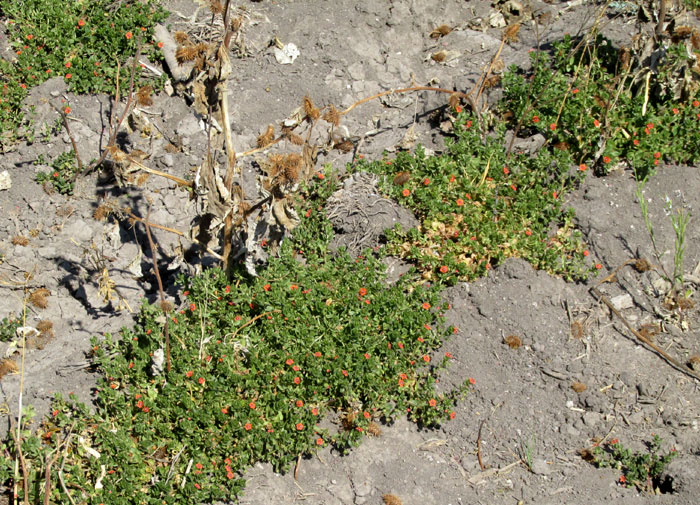
Now during the heart of the dry season, in many scorched, brown-gray, fallow agricultural fields you see the ground-hugging, mat-forming little weed shown above, crowning a former ridge of irrigated corn, or maize. Even from a distance, amid the plant cover, intense points of scarlet show up. Those are flowers only about 4mm in diameter (0.16 inch). One of them is shown below:
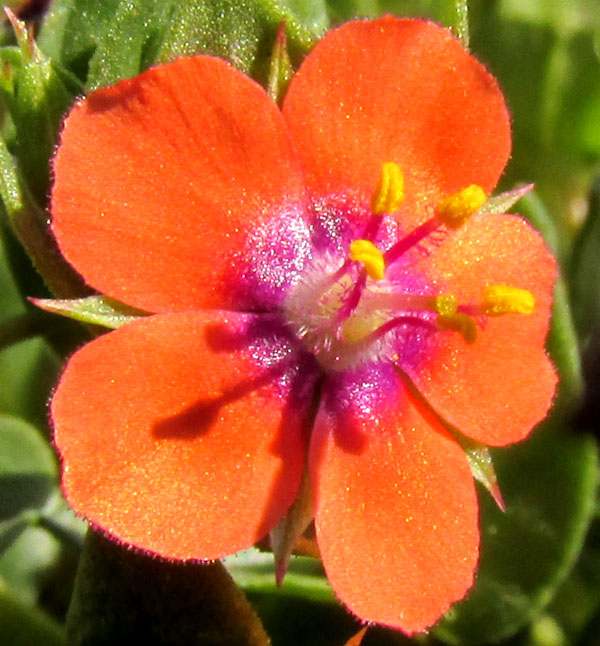
Besides the blossom's dazzling colors, it's worth noticing how hairs at the petals' bases direct into the flower's throat, maybe somehow facilitating pollination, and/or moderating the climate deeper in the throat where the ovary resides; whatever the benefit, they make they flower even prettier. Also notice the petals' margins fringed with microscopic gland-tipped, somewhat spherical hairs. The blossom seen from behind, with its star-shaped calyx, also shows a satisfying combination of color and symmetery:
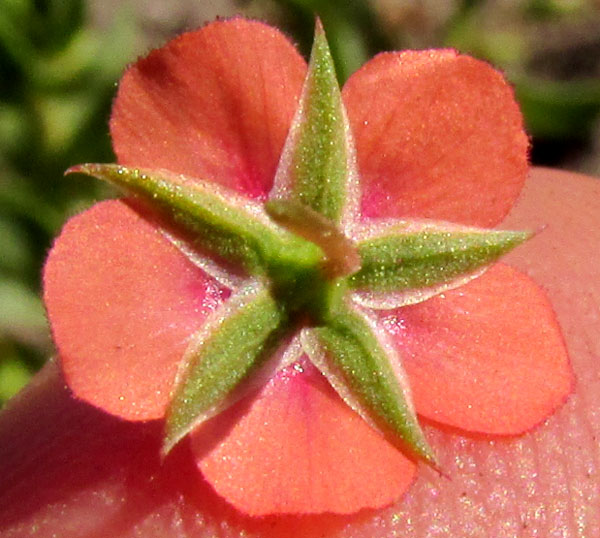
On older parts of the plants' sprawling branches, mature, capsule-type fruits can be found on slender stems, or pedicles, which tend to bend away from the 4-ribbed stems:
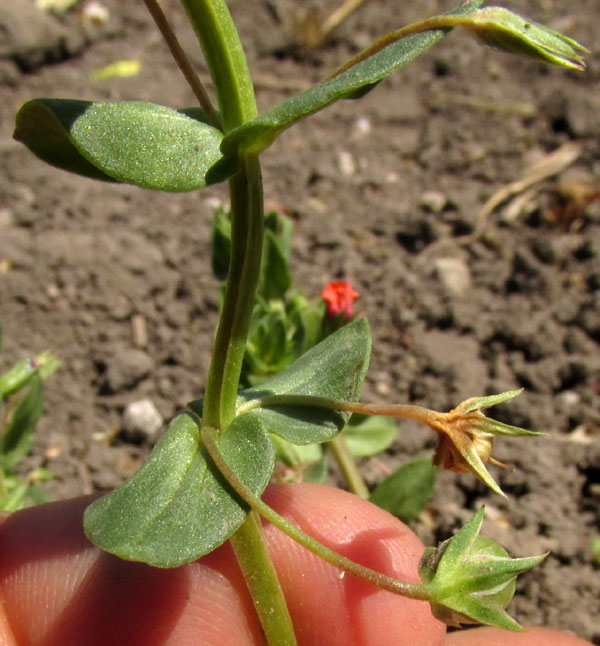
Below, the top of a fruit has been removed, revealing numerous seeds. The Flora of North America reports that each capsule produces 12-45 seeds.
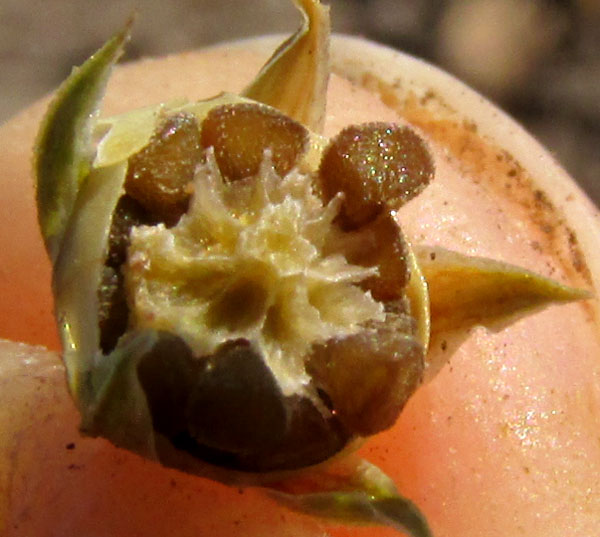
I met this species when I was growing up in rural Kentucky; It was an attention-getting weed in certain fields there, just like here. I was delighted with its common name: Scarlet Pimpernel. I'd read about a real historical figure, and Englishman who called himself the Scarlet Pimpernel, who had used many disguises during his efforts to help French people flee the French Revolution.
Our little Scarlet Pimpernel is ANAGALLIS ARVENSIS, a good old Linnaeus name published in 1753. All this history points to the species' Eurasian ancestry. Here, as in North America and most of the rest of the not-too-cold world outside Eurasia, it's invasive, and well established.
A 2020 article in The International Journal of Frontier Sciences, by Zarmeena Yasmeen and others, reported on a variety of active chemicals in the Scarlet Pimpernel, saying that it has "... recognized medicinal values as an anti-mycotic, antimicrobial, molluscicidal, antioxidant, anti-inflammatory, anti-leishmania, antiviral, cytotoxic, and spermatogenesis" applications.
Though I only know this species as producing red flowers, the Flora of North America says that its flower color varies. There's a blue-flowered form, and individual plants with in-between colors can be found. Linnaeus thought the blue-flowered ones constituted a different species, naming it Anagallis caerulea, but now that name is discarded.
In the old days our plants were placed in the Myrsine Family, the Myrsinaceae, but now most authorities lump that family into the Primrose Family, the Primulaceae.